Amgaite, Tl3+2Te6+O6, a New Mineral from the Khokhoyskoe Gold Deposit, Eastern Siberia, Russia
Abstract
1. Introduction
2. Occurrence, Geological Settings and Mineral Association
3. General Appearance, Physical, Chemical and Optical Properties
4. Raman Spectroscopy
5. Chemical Composition
6. X-ray Diffraction
7. Description of Crystal Structure
8. Discussion: Remarks on the Origin and Implications
Author Contributions
Funding
Conflicts of Interest
References
- National Minerals Information Center. Available online: https://www.usgs.gov/centers/national-minerals-information-center/thallium-statistics-and-information. (accessed on 6 July 2022).
- Genchi, G.; Carocci, A.; Lauria, G.; Sinicropi, M.S.; Catalano, A. Thallium use, toxicity, and detoxification therapy: An overview. Appl. Sci. 2021, 11, 8322. [Google Scholar] [CrossRef]
- Jahns, R.H. Clerici solution for the specific gravity determination of small mineral grains. Am. Miner. 1939, 24, 116. [Google Scholar]
- Huifang, X.; Yifeng, W. An equation for predicting binding strengths of metal cations to protein of human serum transferrin. arXiv 2017, arXiv:1711.06724. [q-bio.BM]. [Google Scholar] [CrossRef]
- Karbowska, B. Presence of thallium in the environment: Sources of contaminations, distribution and monitoring methods. Environ. Monit. Assess. 2016, 188, 640. [Google Scholar] [CrossRef] [PubMed]
- Manceau, A.; Simionovici, A.; Findling, N.; Glatzel, P.; Detlefs, B.; Wegorzewski, A.; Mizell, K.; Hein, J.; Koschinsky, A. Crystal chemistry of thallium in marine ferromanganese deposits. ACS Earth Space Chem. 2022, 6, 1269–1285. [Google Scholar] [CrossRef]
- Rader, S.T.; Mazdab, F.K.; Barton, M.D. Mineralogical thallium geochemistry and isotope variations from igneous, metamorphic, and metasomatic systems. Geochim. Cosmochim. Acta 2018, 243, 42–65. [Google Scholar] [CrossRef]
- Kasatkin, A.V.; Stepanov, S.Y.; Tsyganko, M.V.; Škoda, R.; Nestola, F.; Plášil, J.; Makovicky, E.; Agakhanov, A.A.; Palamarchuk, R.S. Mineralogy of the Vorontsovskoe gold deposit (Northern Urals). Mineralogy 2022, 8, 5–93. [Google Scholar]
- Kasatkin, A.V.; Plášil, J.; Makovicky, E.; Škoda, R.; Agakhanov, A.A.; Tsyganko, M.V. Pokhodyashinite, CuTlSb2(Sb1−xTlx)AsS7−x, a new thallium sulfosalt from the Vorontsovskoe gold deposit, Northern Urals, Russia. J. Geosci. 2022, 67, 41–51. [Google Scholar] [CrossRef]
- Kasatkin, A.V.; Plášil, J.; Makovicky, E.; Chukanov, N.; Škoda, R.; Agakhanov, A.A.; Tsyganko, M.V. Gungerite, TlAs5Sb4S13, a new thallium sulfosalt with a complex structure containing covalent As-As bonds. Am. Mineral. 2022, 107, 1164–1173. [Google Scholar] [CrossRef]
- Kasatkin, A.V.; Anisimova, G.S.; Nestola, F.; Plášil, J.; Sejkora, J.; Škoda, R.; Sokolov, E.P.; Kondratieva, L.A.; Kardashevskaia, V.N. Amgaite, IMA 2021-104, in: CNMNC Newsletter 66. Eur. J. Mineral. 2022, 34, 253–257. [Google Scholar] [CrossRef]
- Anisimova, G.S.; Kondratieva, L.A.; Kardashevskaia, V.N. Characteristics of supergene gold of Karst cavities of the Khokhoy Gold Ore Field (Aldan Shield, East Russia). Minerals 2020, 10, 139. [Google Scholar] [CrossRef]
- Anisimova, G.S.; Kondratieva, L.A.; Kardashevskaya, V.N. Weissbergite (TlSbS2) and avicennite (Tl2O3)—rare thallium minerals. The first finds in Yakutia. Zap. Ross. Miner. Obs. 2021, 2, 18–27. [Google Scholar]
- Anisimova, G.S.; Kondratieva, L.A.; Sokolov, E.P.; Kardashevskaya, V.N. Gold mineralization of the Lebedinsky and Kuranakh types in the Verkhneamginsky district (South Yakutia). Otechestvennaya Geol. 2018, 5, 3–13. [Google Scholar]
- Kondratieva, L.; Anisimova, G. Minerals of Hg, Tl and As of Khokhoy deposit (Aldan shield). In Proceedings of the Geology and Mineral Resources of the North-East of Russia: Materials of the XII All-Russian Scientific and Practical Conference Dedicated to the 65th Anniversary of the Institute of Geology of Diamond and Precious Metals, Siberian Branch of the Russian Academy of Sciences, Yakutsk, Russia, 23–25 March 2022; pp. 184–188. (In Russian). [Google Scholar]
- Haeuseler, H. Infrared and Raman spectra and normal coordinate calculations on trirutile-type compounds. Spectrochim. Acta A Mol. Biomol. Spectrosc. 1981, 37, 487–495. [Google Scholar] [CrossRef]
- Blasse, G.; Hordijk, W. The vibrational spectrum of Ni3TeO6 and Mg3TeO6. J. Solid State Chem. 1972, 5, 395–397. [Google Scholar] [CrossRef][Green Version]
- Kampf, A.R.; Housley, R.M.; Marty, J. Dagenaisite, a new zinc tellurate from the gold chain mine, Tintic, Utah, USA. Can. Mineral. 2017, 55, 867–873. [Google Scholar] [CrossRef]
- Lafuente, B.; Doens, R.T.; Yang, H.; Stone, N. The power of databases: The RRUFF project. In Highlights in Mineralogical Crystallography; Armbruster, T., Danisi, R.M., Eds.; Walter De Gruyter: Berlin, Germany, 2015; pp. 1–30. [Google Scholar]
- Frit, B.; Pressigout, R.; Mercurio, D. Synthese et étude structurale du tellurate (VI) de thallium (III) Tl2TeO6. Mater. Res. Bull. 1975, 10, 1305–1312. [Google Scholar] [CrossRef]
- Holland, T.J.B.; Redfern, S.A.T. Unit cell refinement from powder diffraction data: The use of regression diagnostics. Miner. Mag. 1997, 61, 65–77. [Google Scholar] [CrossRef]
- Zalkin, A.; Forrester, J.D.; Templeton, D.H. The crystal structure of sodium fluorosilicate. Acta Cryst. 1964, 17, 1408–1412. [Google Scholar] [CrossRef]
- Commission On New Minerals, Nomenclature And Classification. Available online: http://cnmnc.main.jp/ (accessed on 1 August 2022).
- Karpova, K.N.; Kon’kova, E.A.; Larkin, E.D.; Savel’ev, V.F. Avicennite, a new mineral. Dokl. Akad. Nauk UzSSR 1958, 2, 23–26. (In Russian) [Google Scholar]
- Pekov, I.V.; Zubkova, N.V.; Belakovskiy, D.I.; Yapaskurt, V.O.; Vigasina, M.F.; Lykova, I.S.; Sidorov, E.G.; Pushcharovsky, D.Y. Chrysothallite K6Cu6Tl3+Cl17(OH)4·H2O, a new mineral species from the Tolbachik volcano, Kamchatka, Russia. Miner. Mag. 2015, 79, 365–376. [Google Scholar] [CrossRef]
- Pekov, I.V.; Krzhizhanovskaya, M.G.; Yapaskurt, V.O.; Belakovskiy, D.I.; Sidorov, E.G. Kalithallite, IMA 2017-044. CNMNC Newsletter No. 39, October 2017, page 1280. Miner. Mag. 2017, 81, 1279–1286. [Google Scholar]
- Rice, C.M.; Welch, M.D.; Still, J.W.; Criddle, A.J.; Stanley, C.J. Honeaite, a new gold-thallium-telluride from the Eastern Goldfields, Yilgarn Craton, Western Australia. Eur. J. Miner. 2016, 28, 979–990. [Google Scholar] [CrossRef]
- Welch, M.D.; Still, J.W.; Rice, C.M.; Stanley, C.J. A new telluride topology: The crystal structure of honeaite Au3TlTe2. Miner. Mag. 2017, 81, 611–618. [Google Scholar] [CrossRef]
- Guberman, D.E. Thallium. In U.S. Geological Survey, 2013, Metal Prices in the United States through 2010: U.S. Geological Survey Scientific Investigations Report 2012–5188. 2013; pp. 178–180. Available online: https://pubs.usgs.gov/sir/2012/5188/sir2012-5188.pdf (accessed on 1 August 2022).
- Thallium Market: An Exclusive Study on Upcoming Trends and Growth Opportunities from 2022–2028; Technical Report; MarketWatch: New York, NY, USA, 2022; Available online: https://www.marketwatch.com/press-release/thallium-market-an-exclusive-study-on-upcoming-trends-and-growth-opportunities-from-2022-2028-2022-08-15 (accessed on 1 August 2022).
- Global Thallium Market Size 2022 Global Research, Growth Statistics, Business Strategy, Industry Share, Supply-Demand, In-depth Insights by Top Manufacturers, Regional Forecast 2028. Available online: https://southeast.newschannelnebraska.com/story/45954383/global-thallium-market-size-2022-global-research-growth-statistics-business-strategy-industry-share-supply-demand-in-depth-insights-by-top (accessed on 1 August 2022).
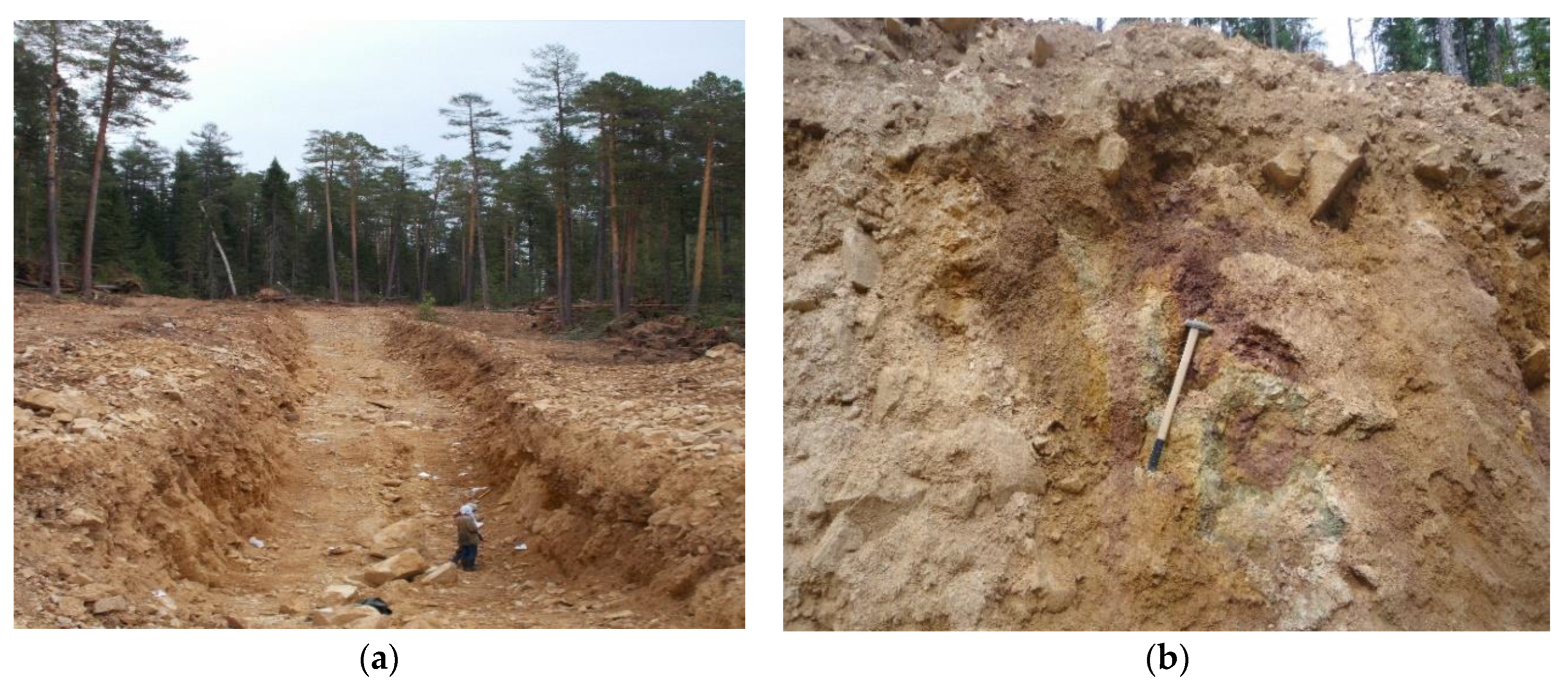
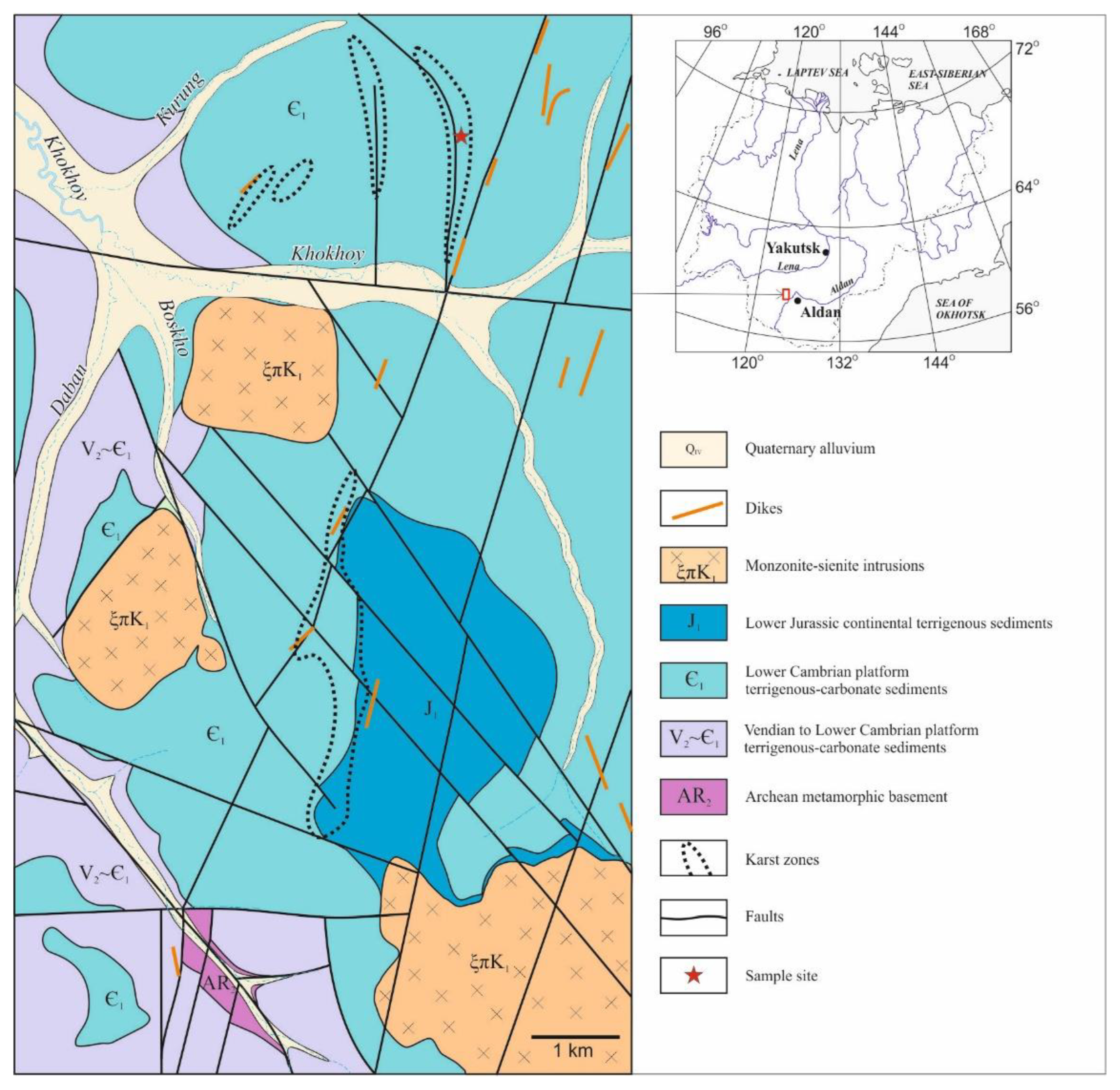
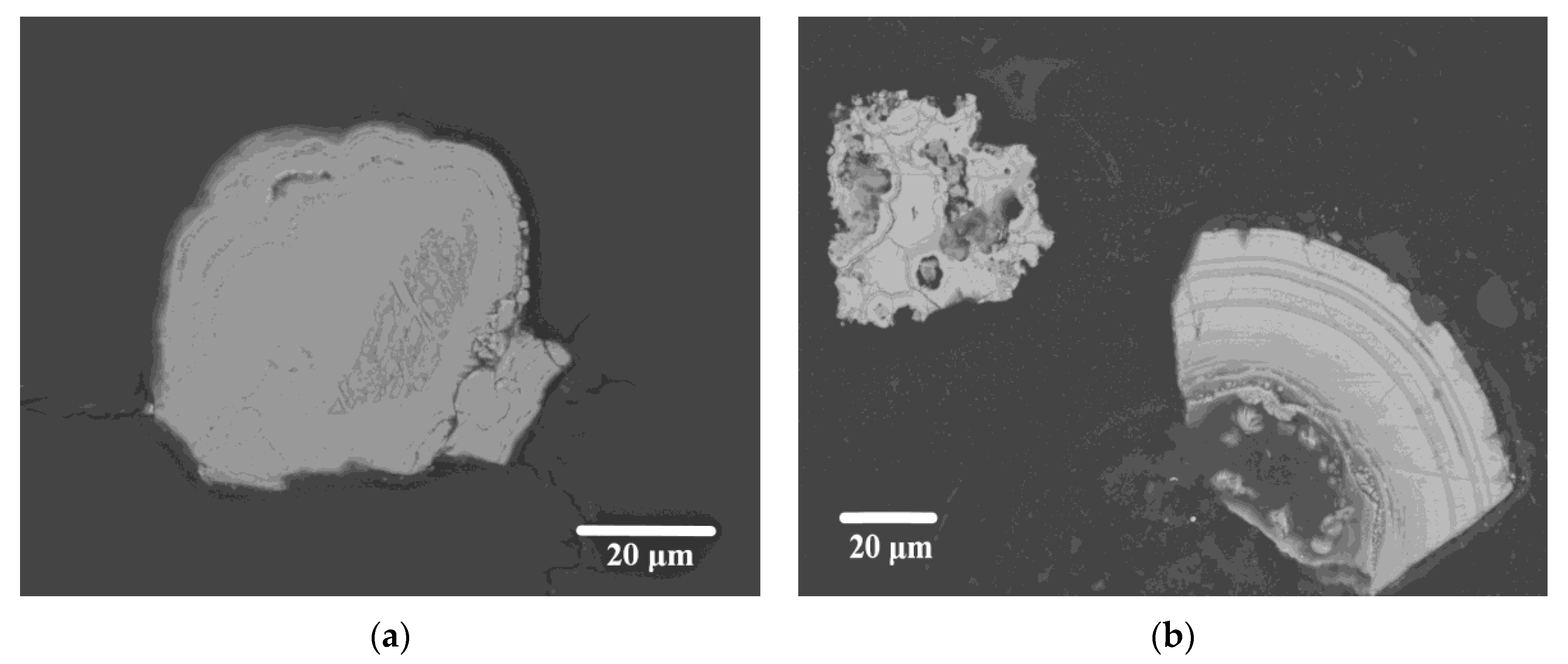

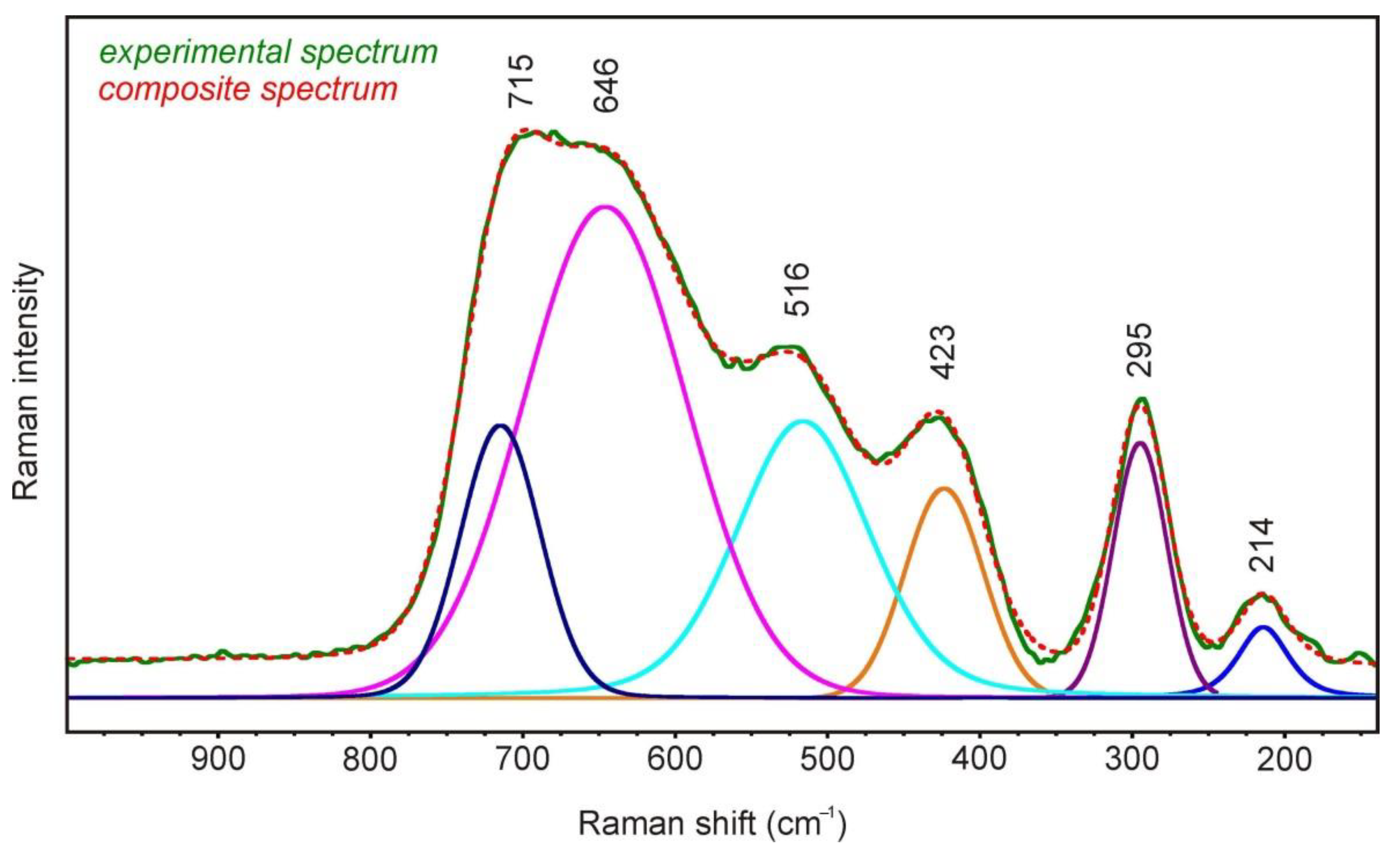
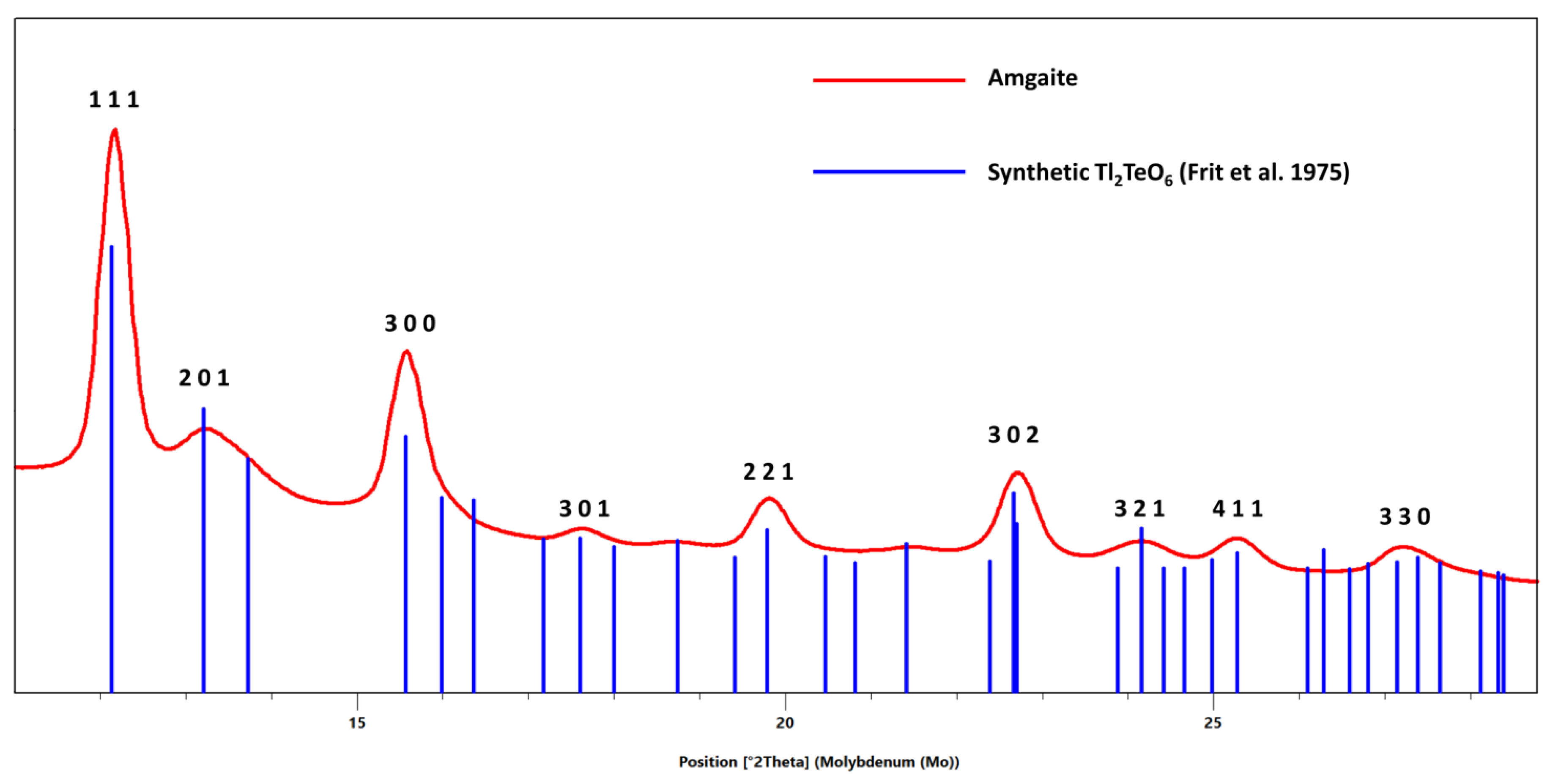
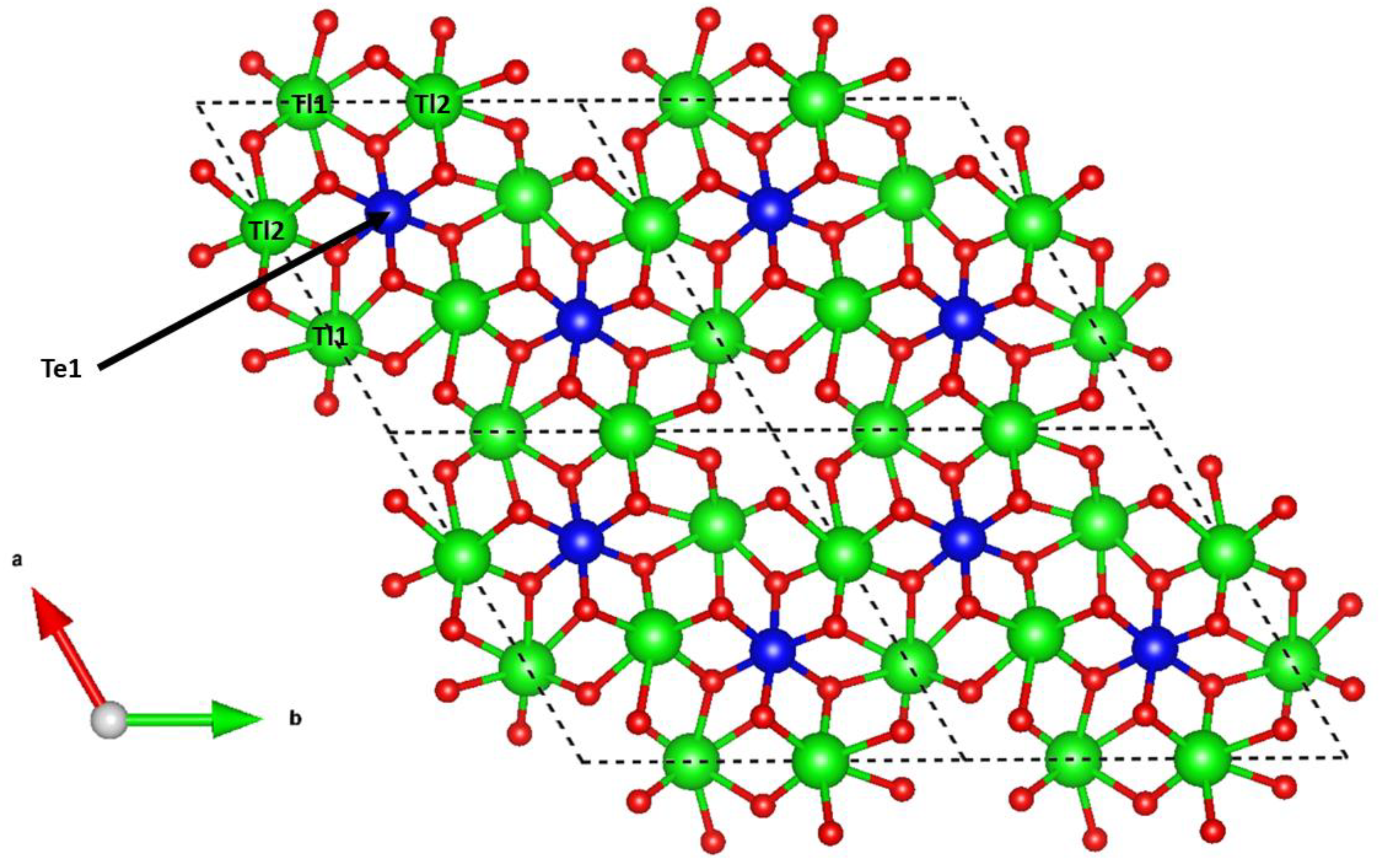
| Rmax | Rmin | λ (nm) | Rmax | Rmin | λ (nm) |
|---|---|---|---|---|---|
| 16.2 | 15.3 | 400 | 13.1 | 12.6 | 560 |
| 15.7 | 14.7 | 420 | 12.8 | 12.4 | 580 |
| 15.1 | 14.2 | 440 | 12.7 | 12.3 | 589 |
| 14.4 | 13.7 | 460 | 12.7 | 12.2 | 600 |
| 14.2 | 13.5 | 470 | 12.5 | 12.0 | 620 |
| 14.1 | 13.4 | 480 | 12.4 | 11.8 | 640 |
| 13.8 | 13.3 | 500 | 12.3 | 11.7 | 650 |
| 13.5 | 13.0 | 520 | 12.2 | 11.7 | 660 |
| 13.3 | 12.8 | 540 | 12.2 | 11.6 | 680 |
| 13.2 | 12.7 | 546 | 12.1 | 11.6 | 700 |
| Constituent | Wt.% | Range | Standard Deviation | Reference Material |
|---|---|---|---|---|
| MgO | 0.43 | 0.31–0.53 | 0.10 | pyrope |
| CaO | 1.62 | 1.50–1.69 | 0.09 | fluorapatite |
| Mn2O3 | 0.25 | 0.18–0.35 | 0.07 | rhodonite |
| Fe2O3 | 0.16 | 0.13–0.19 | 0.02 | hematite |
| Tl2O3 | 66.27 | 64.68–67.12 | 0.98 | Tl(Br, I) |
| Sb2O5 | 3.48 | 2.11–5.74 | 1.51 | Sb |
| TeO3 | 27.31 | 26.10–28.87 | 0.97 | HgTe |
| Total | 99.52 |
| Amgaite | Iobs. [%] | hkl | Synthetic Tl3+2Te6+O6 | Icalc. [%] | ||
|---|---|---|---|---|---|---|
| dobs | dcalc | dobs | dcalc | |||
| 3.352 | 3.354 | 100 | 1 1 1 | 3.36 | 3.354 | 100 |
| 3.063 | 3.084 | 15 | 2 0 1 | 3.09 | 3.085 | 34 |
| 2.619 | 2.615 | 49 | 3 0 0 | 2.62 | 2.618 | 36 |
| 2.541 | 2.550 | 7 | 2 1 1 | 2.55 | 2.551 | 12 |
| 2.313 | 2.317 | 4 | 3 0 1 | 2.32 | 2.318 | 2 |
| 2.189 | 2.186 | 2 | 1 1 2 | 2.19 | 2.179 | 6 |
| 2.065 | 2.063 | 18 | 2 2 1 | 2.06 | 2.064 | 13 |
| 1.911 | 1.909 | 4 | 2 1 2 | 1.910 | 1.909 | 10 |
| 1.804 | 1.806 | 28 | 3 0 2 | 1.806 | 1.805 | 32 |
| 1.697 | 1.693 | 8 | 3 2 1 | 1.695 | 1.695 | 17 |
| 1.625 | 1.620 | 9 | 4 1 1 | 1.621 | 1.621 | 7 |
| 1.506 | 1.510 | 7 | 3 3 0 | 1.512 | 1.512 | 5 |
| Atom | x | y | z | Biso |
|---|---|---|---|---|
| Te1 | 0.33330 | 0.66660 | 0.49875 | 0.1750 |
| Te2 | 0.00000 | 0.00000 | 0.00000 | 0.1290 |
| Tl1 | 0.28558 | 0.00000 | 0.50000 | 0.3580 |
| Tl2 | 0.62306 | 0.00000 | 0.00000 | 0.3380 |
| O1 | 0.08770 | 0.88050 | 0.77310 | 1.2400 |
| O2 | 0.46060 | 0.59500 | 0.74170 | 2.3640 |
| O3 | 0.21940 | 0.75750 | 0.27890 | 1.1530 |
| Interatomic distances | ||||
| Te1–O1 | 1.99(3) × 6 | Tl1–O1 | 2.35(3) × 2 | |
| Tl1–O3 | 2.23(3) × 2 | |||
| Te2–O2 | 1.99(4) × 3 | Tl1–O2 | 2.16(5) × 2 | |
| Te2–O3 | 1.95(3) × 3 | |||
| Tl2–O2 | 2.33(5) × 2 | |||
| Tl2–O3 | 2.26(3) × 2 | |||
| Tl2–O1 | 2.07(3) × 2 | |||
Publisher’s Note: MDPI stays neutral with regard to jurisdictional claims in published maps and institutional affiliations. |
© 2022 by the authors. Licensee MDPI, Basel, Switzerland. This article is an open access article distributed under the terms and conditions of the Creative Commons Attribution (CC BY) license (https://creativecommons.org/licenses/by/4.0/).
Share and Cite
Kasatkin, A.V.; Anisimova, G.S.; Nestola, F.; Plášil, J.; Sejkora, J.; Škoda, R.; Sokolov, E.P.; Kondratieva, L.A.; Kardashevskaia, V.N. Amgaite, Tl3+2Te6+O6, a New Mineral from the Khokhoyskoe Gold Deposit, Eastern Siberia, Russia. Minerals 2022, 12, 1064. https://doi.org/10.3390/min12091064
Kasatkin AV, Anisimova GS, Nestola F, Plášil J, Sejkora J, Škoda R, Sokolov EP, Kondratieva LA, Kardashevskaia VN. Amgaite, Tl3+2Te6+O6, a New Mineral from the Khokhoyskoe Gold Deposit, Eastern Siberia, Russia. Minerals. 2022; 12(9):1064. https://doi.org/10.3390/min12091064
Chicago/Turabian StyleKasatkin, Anatoly V., Galina S. Anisimova, Fabrizio Nestola, Jakub Plášil, Jiří Sejkora, Radek Škoda, Evgeniy P. Sokolov, Larisa A. Kondratieva, and Veronika N. Kardashevskaia. 2022. "Amgaite, Tl3+2Te6+O6, a New Mineral from the Khokhoyskoe Gold Deposit, Eastern Siberia, Russia" Minerals 12, no. 9: 1064. https://doi.org/10.3390/min12091064
APA StyleKasatkin, A. V., Anisimova, G. S., Nestola, F., Plášil, J., Sejkora, J., Škoda, R., Sokolov, E. P., Kondratieva, L. A., & Kardashevskaia, V. N. (2022). Amgaite, Tl3+2Te6+O6, a New Mineral from the Khokhoyskoe Gold Deposit, Eastern Siberia, Russia. Minerals, 12(9), 1064. https://doi.org/10.3390/min12091064







